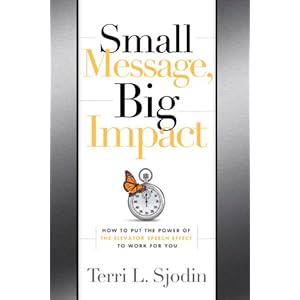Please email me at:
Or use the form below.
[contact-form 1 “Contact form 1”]
The no-pants guide to spending, saving, and thriving in the real world.

A few weeks ago, I discovered the queue at my public library’s website. The process is simple: Select your books, wait a few days, then pick them up. They are available from any library in the county, delivered to my local library. That’s awesome. Much more convenient-and cheaper-than Amazon.
So I moved a couple of pages of my Amazon wish-list into the library’s queue.
I must not have been thinking, because two days later, I got an email telling me that 19 books were ready to be picked up and 10 more were in transit.
In this county, each checkout is good for 21 days. For items that don’t have a waiting list, you can reserve 3 times. That’s 12 weeks for 29 books. Hopefully, I’m up to the challenge. Please keep in mind, I’m a father of three, two of whom are in diapers, and I’m married, and I have a full time job.
I have frugally blown every second of spare time for months.
Update: This was another post written in advance. When all of the books came in, I suspended my request list. Little did I realize, the suspension cancels itself after 30 days. That was 30 more books. Whee!

Satirical reports regarding George Zimmerman have been misconstrued as factual by several media outlets, which have led to the belief that the man who killed Trayvon Martin is now a multimillionaire due to a lucky lottery ticket. The improbability of the story is astounding, but the more inconceivable notion is that reporters actually believed it enough to pass it on to their audience. The origin of the hoax was the same source that profligates fake news items on a regular basis: The Onion.
was obviously meant to be disseminated as sarcasm, but the writers must feel tremendous pride in their ability to dupe the mainstream media. An unintended prank has a marvelous ability to generate a lasting reputation for the satirist. Notoriety is now something the author has in common with Zimmerman.
A stark contrast exists between lotteries and trials, and they are not equivalent. The justice system strides to avoid occurrences of random chance while lotteries promote the notion that anyone can win. The legal process is supposed to rely on evidence. Regardless of the circumstances, a victory in the courtroom has to be vigorously earned. Contrarily, there is nothing anyone can do to increase their chances in a lottery short of buying massive amounts of tickets. In a trial, the concept of reasonable doubt exists to exonerate the defendant, which should eliminate any potential for a toss-up. Courtrooms operate using evidence while lotteries are strictly statistical; therefore, the comparison is non-existent.
Even when it comes to jury selection, the process is not chaotically uncontrolled. Both sides have a general composition is mind, and they meticulously scrutinize prospective jurors as they whittle the numbers down. The pool is always sifted for bias. They are analyzed with hopes of picking people that will be sympathetically swayed towards a certain point of view. At the end, one side picked a better jury. Lotto victors cannot pick the numbers that will be responsible for their fate. Winners of lotteries do not stalk unarmed teenagers with a gun and fatally shoot them, but apparently winners of trials in Florida do.
Lotteries are often labeled as a tax for dumb people; coincidentally, this demographic is the same segment of the population that was targeted by the falsified journalism. In fact, real lottery odds are mathematically insignificant. An ABC News study declares it would take 1,684,841 years for the average lottery player to win a jackpot. Not even Zimmerman is that lucky.
I guess I’ve been feeling pretty domestic lately. This is the second food post in two weeks. I wonder what that means? It probably means I’m hungry.
If I’m bringing a dessert to a potluck, or I need a dessert for a party, I bring crack. I’m absolutely sure that wasn’t the name on the recipe when I found it, but it’s been renamed by everyone who has ever tried it. I’m sorry, Mr. Potato-Chip-Man, but I can eat just one of those. This stuff needs to be restricted by the government. It’s an addictive, sell-your-first-born-for-another-hit bit of salty-sweet yum. I’m gonna make you fat.
1 cup of salted butter – $2
1 cup of brown sugar – $1
2 packs of saltines (That’s half of a box) – $2
2 bags of chocolate chips – $4
2 handfuls of toffee chips (broken Heath bars) – $1
Preheat oven to 350 degrees.
Cover two cookie sheets in foil. Spread crackers over each sheet in a single layer.
Mix the butter and sugar in a saucepan. Stir over medium heat until it starts looking like caramel, then stir for another minute or two. You still want it kind of runny, so don’t let it get thick.
Spoon the caramel over the crackers. Get some on each cracker. Try to get it even, but don’t worry about it too much. Sloppy is good. Remember, half the caramel for each cookie sheet.
Put the cookie sheets full of crackers and caramel in the oven for 10-15 minutes. The caramel will spread out and flow through and around the crackers. You’ll know it’s done when the caramel starts bubbling evenly.
Pour one bag of chocolate chips over each pan. Try to spread it out evenly, but–again–don’t sweat it.
Go away for 10 minutes.
When you come back, the chocolate will be all melty-good. Spread it evenly with a rubber spatula.
Sprinkle some toffee chips over the chocolate, then put the pans in the freezer to cool and set. It will take at least a couple of hours.
When you pull the pans out, peel off the foil then break it up into snack-sized pieces. Don’t break it up first, or you’ll spend the evening moaning over the candy and crying over the foil hitting your fillings.
Depending on how long you cooked the caramel, it will get soft when it approaches room temperature. I always store it in the refrigerator to avoid that.
When you bring this to a party, always pack it two containers. When the first one is empty, you can auction off the second. You should be able to turn the $10 you spent on ingredients into at least $50 of guilt-ridden goodness.
I was recently given an advanced reader copy of Small Message, Big Impact by Terri L. Sjodin. It’s a book on crafting an effective and persuasive elevator speech.

An elevator speech is, according the the author, “a brief presentation introducing a product, service, philosophy or an idea. The name suggests the notion that the message should be delivered in the time span of an elevator ride, up to about 3 minutes. Its general purpose is to intrigue and inspire a listener to want to hear more of the presenter’s complete proposition in the near future.” It’s a 3-minute speech you give to intrigue someone enough that they will let you give a real presentation.
A lot of people–probably most–use their 3 minutes of unexpected access as an “information dump”. They pour as much data as possible into their audience. According to Sjodin(and I agree!), and elevator speech needs to be primarily persuasive, not informative. You need to include enough information to back up your persuasive arguments, but too much information is at least as bad, if not worse, than too little.
An elevator speech is either a sales pitch or a waste of time. You are selling the right to give more detailed information at a later time. The elevator pitch is not about making the sale. It’s about advancing the ball toward the eventual sale.
Who needs an elevator pitch? You do. Everybody sells. Even if you don’t have a product, a service, or a business, you have yourself. Can you pitch your boss on why you deserve a raise or a promotion?
The author walks you through creating an elevator speech that takes advantage of Monroe’s Motivated Sequence to advance your goal, whatever that is. She’ll teach you how to grab your audience’s attention and make them recognize a need for change. You’ll offer a solution, help them see the super-ninja-awesome future you’re offering, and give them a clear call to action. All in 3 to 5 minutes. Small Message, Big Impact will also teach you to provide a clear progression through those steps, making it easy for your target to say yes.
You’ll learn the basic outline of an elevator speech, including how to grab your target’s interest, build a persuasive case, and establish credibility when you’ve been surprised with a few moments of access. The three pieces of any successful presentation, from an elevator speech to a full-day presentation are
One of the best ways to sound credible, which will assist your delivery like nothing else, is to use an authentic voice. Be sincere and sound it. Believe in the material and yourself. Know the material–inside and out–and practice it until you can deliver it smoothly, even if that means enlisting a friend for speech practice.
Of the books I’ve reviewed, I think this is my favorite. If you need to design an elevator speech or improve the one you’ve been using, you should read this book. Even if you don’t care about an elevator speech, the book provides a decent education on persuasive selling that easily carries over to the written word.
How would you(or do you) use an elevator speech?
When this goes live, I’ll be on the road to the Financial Bloggers Conference outside of Chicago. That translates to a day off here.
Monday, I’ll be back with a whole bucket full of bloggy goodness.